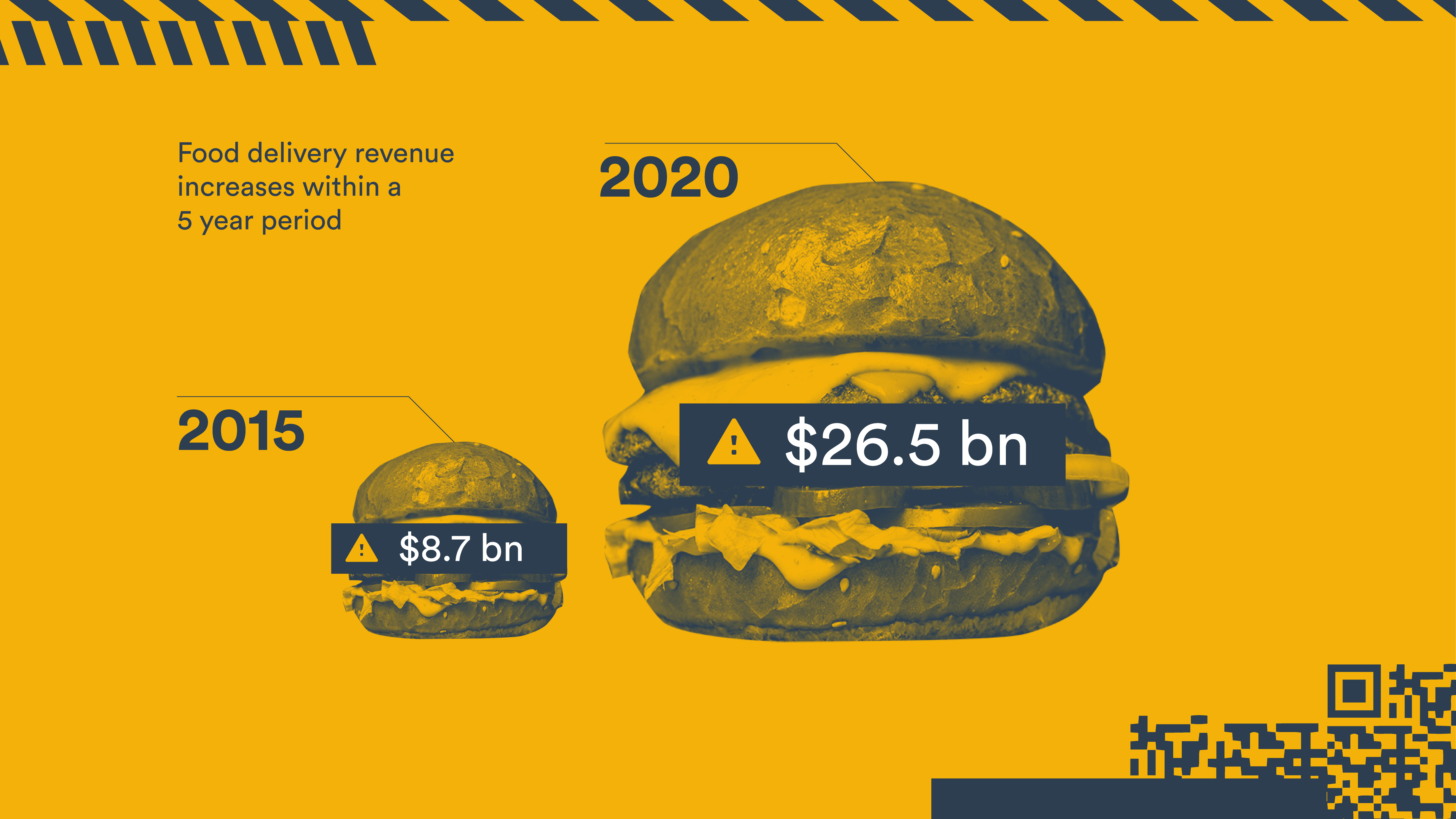It seems so easy, doesn’t it? With services like Uber Eats or Just Eat to do all the leg work (literally) for you, how hard can it be to add online delivery to your restaurant operation?
As it turns out, pretty difficult - if you fail to do your homework.
There’s nothing people like more these days than sitting back on their sofa and ordering delicious food that’s delivered directly to the doorstep. As a restaurateur, you can win an army of new fans by offering this service.
But it’s frighteningly easy to get it wrong and there are more potential pitfalls than you may realise.
That’s why we’ve decided to write this guide.
Why implement food delivery at your restaurant?
In 2015, food delivery revenue in the US was $8.7 billion.
Last year, it topped out at $26.5 billion. Pandemic or no pandemic, it’s clear that this is an element of the hospitality industry which shows no signs of slowing down.

Despite this, there remains some understandable concern about the legitimacy and fit of food delivery for many established restaurant businesses. And, in some cases, it absolutely isn’t a good fit.
But overlooking a food delivery service could be a mistake. This is now a strategy employed by restaurants across the globe. In the UK, for instance, there are an estimated 11 million online food delivery users contributing to a sector that’s now worth £8.5 billion to the economy.
Food delivery may not be for you, but it at least deserves to be explored.
Common mistakes restaurants make with food delivery
There are lots of services which make adding food delivery to your business model as easy as it should be, but there are, equally, plenty of potential pitfalls.
Whether you choose Uber Eats, Deliveroo or Just Eat, here are five mistakes others have made, and which you can avoid.
If you’re lucky, this strategy might work. But what if your in-house menu is simply too complex for home delivery? Can you really afford the potential brand damage that might result?
The key with online delivery menus is to keep things simple. This is for two reasons:
-
there’s a tonne of competition, and you don’t want to bamboozle your potential customers - they’ll just head elsewhere; and
-
the food you deliver needs to be compatible with delivery.
That last point is the most important. So, take a look at your menu and work out what can and can’t be placed into a container and driven several miles to someone’s house.
2. Using stock (or old) photography
Humans are visual creatures, and this particular sense plays a huge role in deciding what to eat.
In the restaurant, your customers can smell and see the potential dishes they can choose from. But at home, they have nothing more than an app with which to make their decision, and that makes the imagery you provide very important indeed.
Online food orders are influenced almost entirely by visual stimulation. Sure, for some customers, the mere sight of the words representing their favourite dish might be enough, but for those who are willing to browse, the photos of your food need to be unique, attractive, and up to date.

Let’s say you place your restaurant’s delivery service on Uber Eats. That means you can sit back and watch as the orders fly in, right? After all, it’s Uber Eats’ job to do the marketing for you.
Isn’t it?
Think again. You can’t rely on the delivery service to do all the legwork for you when it comes to promotion - you’ll still need to promote the link to your restaurant if you want people to use it.
Just bear in mind that there’s a bit of a catch 22 going on here; as much as you want people to find you on the delivery service, you want to balance that with pick-ups and direct business to avoid spending all your marketing budget on commission fees.
So, promote the link, but don’t go overboard. Make sure you continually remind customers that they can bypass online ordering by coming straight to you for pick-up.
4. Relying too heavily on deals
There are loads of offers, deals and promotions you can run through devices like Just Eat and Uber Eats. When you first do so, you’ll probably enjoy an uplift in orders.
This is great - unless you get too trigger-happy with the deals. The key is to use them sparingly and ensure customers don’t become too reliant on the discounts you offer for online ordering.
Try and make your deals special affairs and remember to promote them on social media. But don’t be afraid to pull the plug and resort to your standard pricing; confidence like that will drive more people to your brand and make them feel ultra-special when you do drop the odd promotion.
5. Paying commission twice
Online food delivery services are an awesome route to market. They’ll help you find new customers you may otherwise have missed.
But this is where it can go horribly wrong.
Think about it: someone finds you on Deliveroo, orders and loves their meal. So, they order again in the future - via Deliveroo - and you end up paying commission again on what was a guaranteed order from an existing customer.
Doesn’t sound fair, does it?
The key to avoiding this is to begin building a customer list from people who find you on the delivery service. Send them a feedback form and ask for their email address or mobile number with the promise of future, personalised offers - you’ll be amazed by how quickly you build a customer database that enables you to bypass repeat online order commission.
As noted earlier, online food delivery isn’t for every restaurant, but if you think you can make a success of it within your operation, make sure you avoid the above pitfalls at all costs.